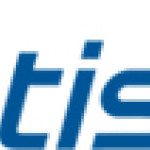- Industri: Telecommunications
- Number of terms: 29235
- Number of blossaries: 0
- Company Profile:
ATIS is the leading technical planning and standards development organization committed to the rapid development of global, market-driven standards for the information, entertainment and communications industry.
In electronic communication, a multi-character symbol, created with ASCII characters, to express emotions and physical characteristics that would normally be communicated by body language and facial expressions in face-to-face communication. Note: Emoticons are most often used in informal e-mail messages and newsgroup postings and are usually designed to be viewed sideways. Some examples of emoticons are: Symbol Meaning Why? :-) happiness a smiley face :- ( unhappiness, disappointment a frown ;-) slyness, "just kidding" a wink :-o surprise, shock open mouth :-\ irony tilted mouth.
Industry:Telecommunications
In electronic commerce (also called "e-commerce",) an application allowing users of a commercial Web site to select products from the screen display as they browse, and then to securely pay for all of those selected products in one secure transaction.
Industry:Telecommunications
In electromagnetic wave propagation, polarization such that the tip of the electric field vector describes an ellipse in any fixed plane intersecting, and normal to, the direction of propagation. Note 1: An elliptically polarized wave may be resolved into two linearly polarized waves in phase quadrature with their polarization planes at right angles to each other. Note 2: Circular and linear polarization are special cases of elliptical polarization.
Industry:Telecommunications
In electromagnetic wave propagation, polarization such that the tip of the electric field vector describes a helix. Note 1: The magnitude of the electric field vector is constant. Note 2: The projection of the tip of the electric field vector upon any fixed plane intersecting, and normal to, the direction of propagation, describes a circle. Note 3: A circularly polarized wave may be resolved into two linearly polarized waves in phase quadrature with their planes of polarization at right angles to each other. Note 4: Circular polarization may be referred to as "right-hand" or "left-hand,"depending on whether the helix describes the thread of a right-hand or left-hand screw, respectively.
Industry:Telecommunications
In electromagnetic wave propagation, phase-interference fading caused by multipath, and which may be approximated by the Rayleigh distribution.
Industry:Telecommunications
In electromagnetic wave propagation, a small random fluctuation of the received field strength about its mean value. Note: Scintillation effects become more significant as the frequency of the propagating wave increases.
Industry:Telecommunications
In electromagnetic wave propagation, a redirection by diffraction of a portion of the incident radiation that strikes a well-defined obstacle such as a mountain range or the edge of a building. Note: The knife-edge effect is explained by Huygens' principle, which states that a well-defined obstruction to an electromagnetic wave acts as a secondary source, and creates a new wavefront. This new wavefront propagates into the geometric shadow area of the obstacle.
Industry:Telecommunications
In electrical systems, a network that reduces the amplitude of a signal without appreciably distorting its waveform. Note 1: Electrical attenuators are usually passive devices. Note 2: The degree of attenuation may be fixed, continuously adjustable, or incrementally adjustable. Fixed attenuators are often called pads, especially in telephony. Note 3: The input and output impedances of an attenuator are usually matched to the impedances of the signal source and load, respectively. 2. In optical systems, a device that reduces the amplitude of a signal without appreciably distorting its waveform. Note 1: Optical attenuators are usually passive devices. Note 2: The degree of attenuation may be fixed, continuously adjustable, or incrementally adjustable.
Industry:Telecommunications
In electrical engineering, the process of connecting together metal parts so that they make low resistance electrical contact for direct current and lower frequency alternating currents. 2. The process of establishing the required degree of electrical continuity between two or more conductive surfaces that are to be joined.
Industry:Telecommunications
In electrical engineering, a device for converting direct current into alternating current. 2. In computers, a device or circuit that inverts the polarity of a signal or pulse. Deprecated synonym negation circuit.
Industry:Telecommunications
